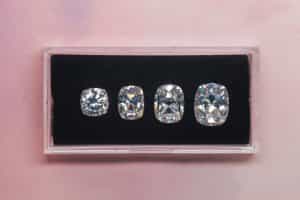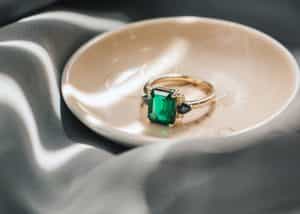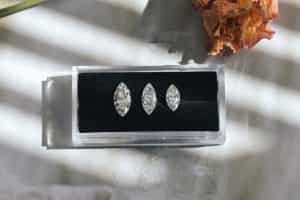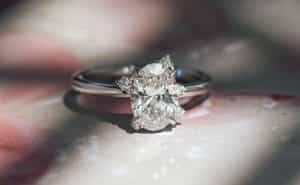
written by Mo
How to Choose Your Engagement Ring Metal
So, we’re usually talking about diamonds and gemstones, but today, we’re going to discuss what holds them. Everything you need to know about precious metals to choose the perfect engagement ring or wedding band. Let’s call this Metals types 101!
In this post we’re going to cover:
- All the different engagement ring metal options that are available to you.
- All the different metal colors that you can choose from.
- The difference between carat and karat, (that’s one that we get all the time) and how it affect the different gold colors.
- And lastly, we’re going to cover a very popular question: White gold versus platinum – which metal is best for your engagement ring or wedding band.
Let’s dive right in, shall we?
What are the most common precious metals that people think of..
Gold is probably the most known metal, and the most common colors are yellow, rose, or white.
We’ve also got platinum, palladium and silver.

What metals we DON'T use
One thing we’re going to say right off the bat is you DO NOT want to use Silver for an engagement ring because first of all yes, it’s a white metal, but it tarnishes. This means that as it gets exposed to air it typically turns grey or black. The bigger problem, though, is it is way too soft and malleable.
This means you would be able to literally pry the prongs off a stone just with your fingernails. It’s not safe so you don’t want to use that.
Moving on, palladium is a metal we used to use, and we stopped using it. It is a platinum family metal. All it means is that it’s a naturally white metal. However, over the course of five years or more, we found that most of our clients were not happy with the way that it aged. It tends to dull down very quickly and takes on a very dark grey tone. So, because we don’t use silver and palladium, we won’t be covering those in this post.
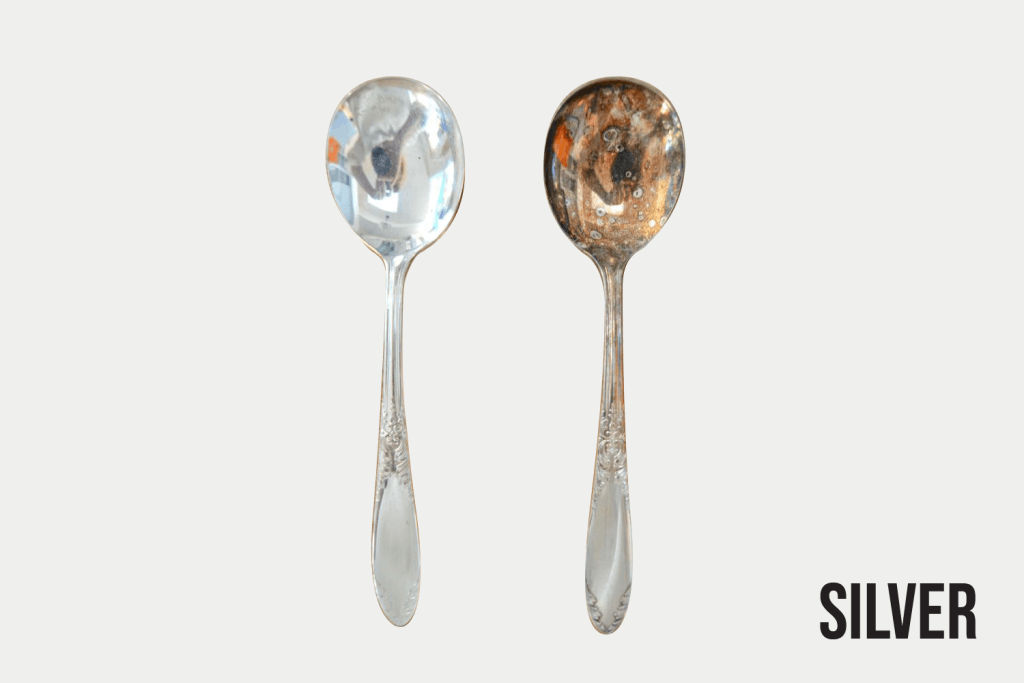
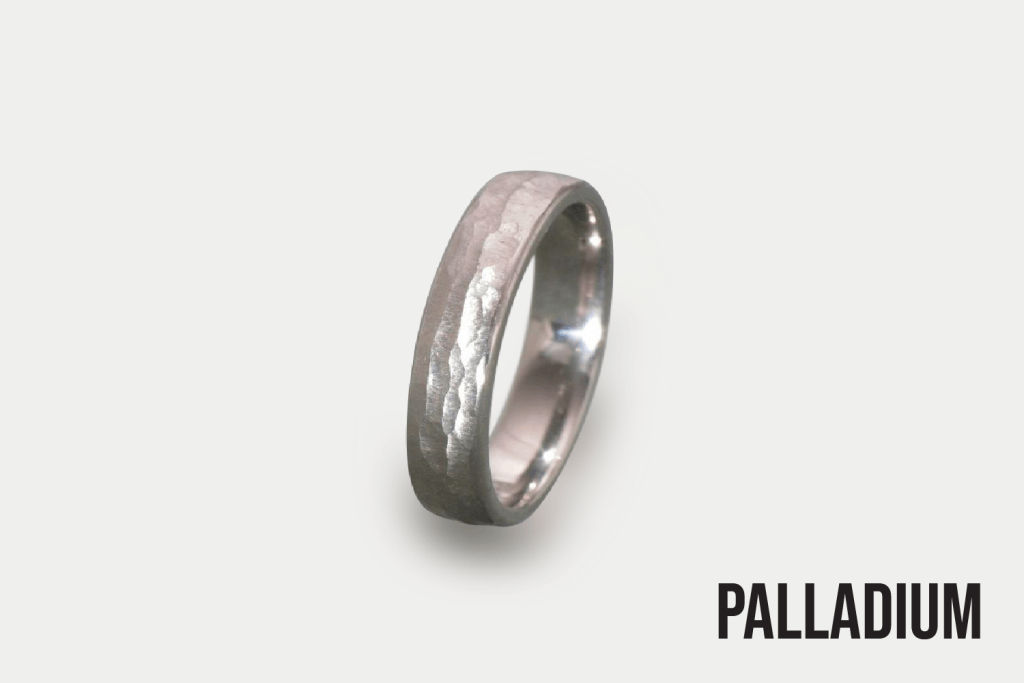
Gold and Karat
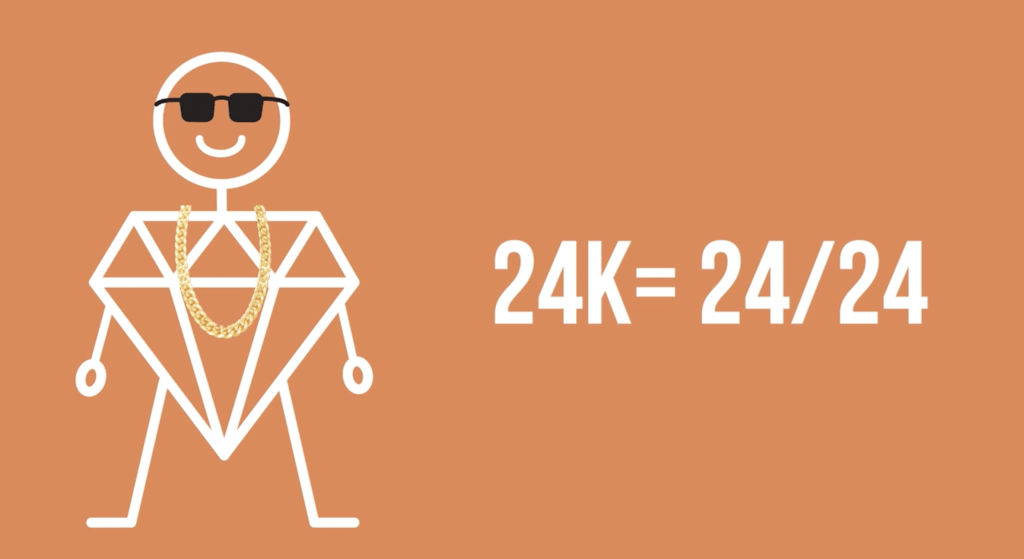
Now onto the meat of this post. We’re kicking off talking about Gold by talking about its purity. It is always measured out at 24 parts. So, if you have a friend with a 24k chain that simply means 24 out of 24 is gold, if it is 18k that means18 out of 24 is gold and the remainder is another metal or other alloys. With 10k gold, 10 out of 24 is gold and the remainder is other metals.
You might be wondering why we mix gold with other metals, it’s primarily for hardness and color. You could never make an engagement ring out of 24k gold because it would be too soft. We can make jewelry with 10k, 14k, 18k gold. The other reason why we mix gold is for color- if you want to make a white gold engagement ring, we’re often going to use nickel to give it that white hue. If you want to make a rose gold ring, we often use copper to give it the pink hue.
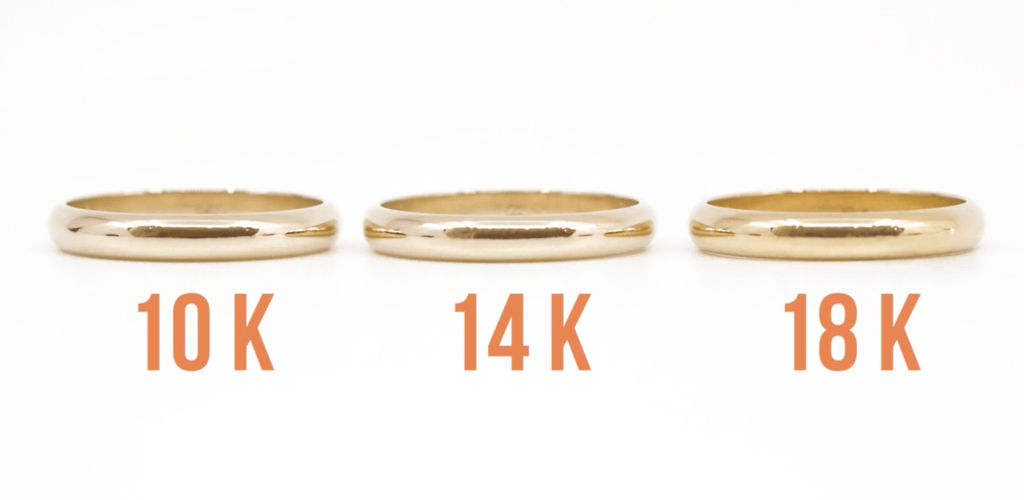
Another thing to note about karat is that it affects color, but it would probably affect yellow gold the most. You’re going to see a difference in color between 10k, 14k and 18k because as the concentration of gold increases, the ring is going to get more yellow.
Now, if you’re somebody that’s not really color sensitive, you’re probably not going to be able to see that difference. When you compare 10k, 14k, 18k all lined up you’ll see, for example, 14k gold is more of a mellow buttery yellow and as we increase the concentration of gold to 18k, you’re going to see more of a concentrated punch yellow.
Yellow gold is the one where karat is going to affect the softness of the metal the most. So, because of the different alloys that are used to make it yellow, 18k is quite a bit softer in comparison to 14k. That’s something that we’ll often talk to our clients about depending on their ring style because if you compare 18k white gold with 18k yellow gold the yellow gold will be way more bendable than the white.
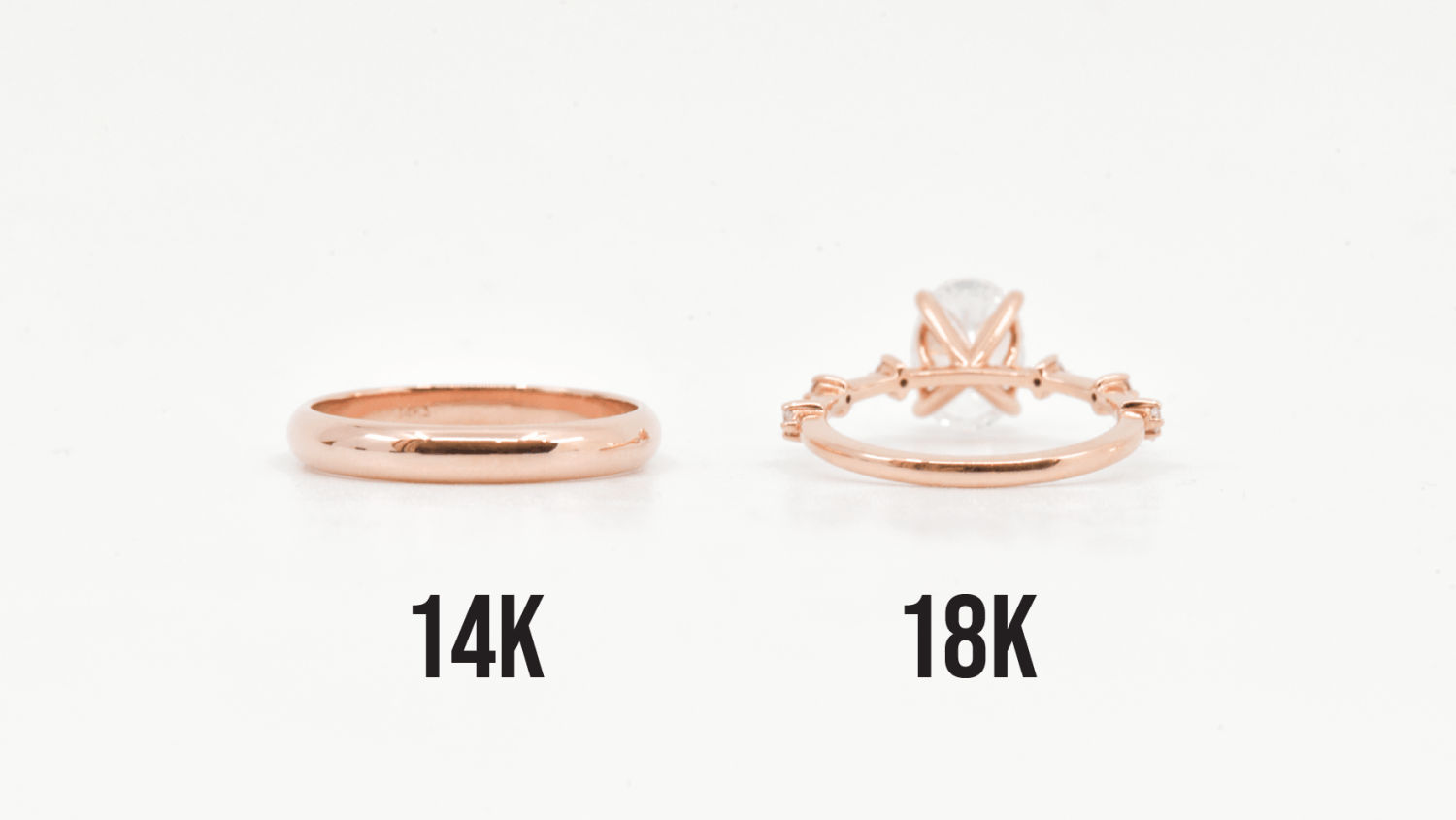
Even when it comes to rose gold, you’ll be able to see a difference in color between 14k and 18k. We do find that 14k rose gold has more of an orange tone to it, whereas 18k is more of a rosy rose. So something to consider is whether you want more of an orange hue or more of a pinky rose.
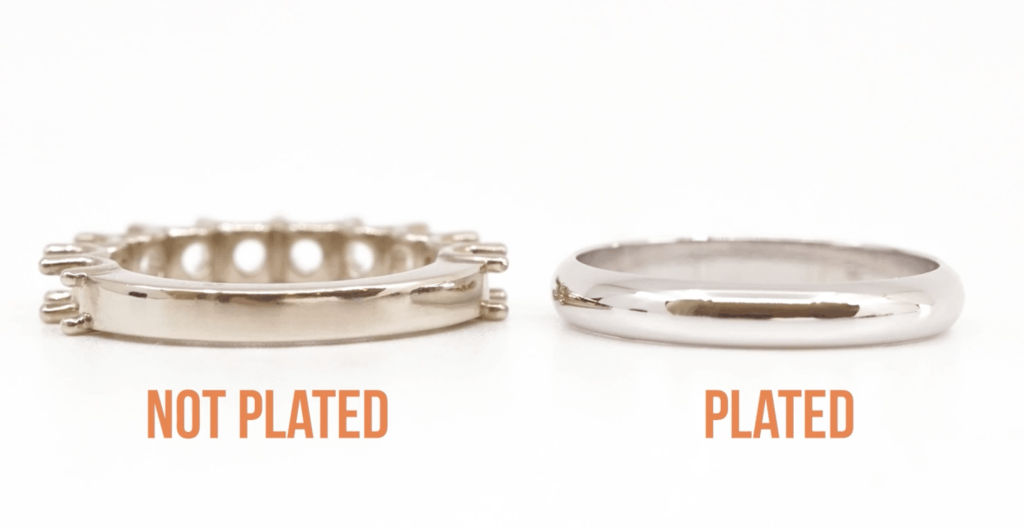
The reason, we say it has the least impact on color is because white gold rings are typically plated with rhodium, which is a liquid metal in the platinum family.
Plating is kind of like painting it. So, because of that 10k, 14k, 18k, will all look exactly the same when they’re brand new because all you are seeing is the white plating on the surface.
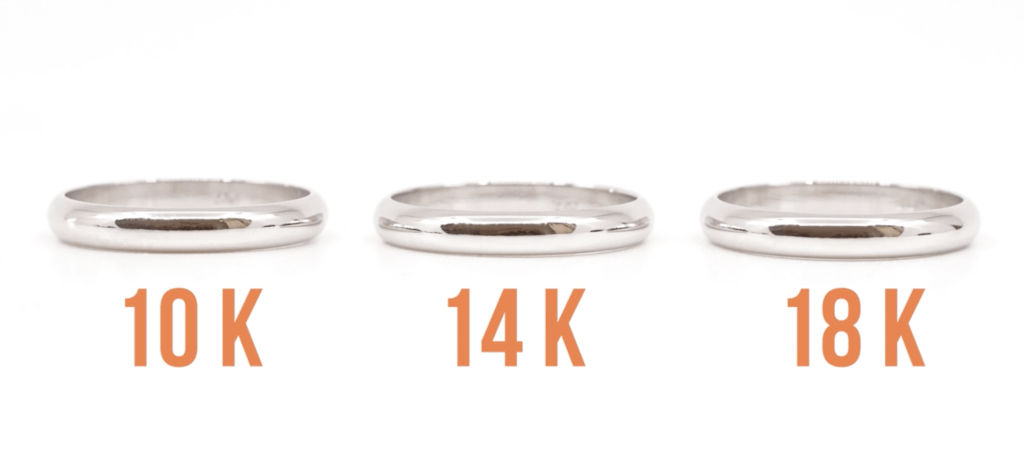
Functionally 10k is stronger than 14k which is stronger than 18k gold. One thing to note is the most common alloy that is used in white gold to make it white is nickel. This is important to note because a small percentage of people will react to nickel. This is what we call a sensitivity/allergy. This means that in a 10k ring the percentage of nickel might be large enough for some people to suddenly feel like their finger gets itchy, or they might even develop a rash. In this case you may have to go higher in karat and in extreme cases, you may have to consider a different metal like platinum, which is hypoallergenic.

Another thing to consider with karat is the higher you go in the karat of gold, the higher the price jumps. It could be a few hundred dollars difference between each karat jump. This price also depends on the style involved as well.
White gold vs Platinum
Now to answer the pressing question- white gold vs platinum.
“Can you see the difference?” The answer is no because we just explained white gold is plated with rhodium, which is a platinum family metal so basically visually, they will look the same.
“Platinum is often marketed as the best metal.” It’s not the best metal. It’s a metal and there’s pros and cons to white gold and pros and cons to platinum which we’ll go through now.

White Gold
Let’s start with white gold, the pro with white gold is that it has a superior ability to hold a polish. That simply means the metal portion of the ring is going to stay bright and shiny for a longer period of time. The downside that is associated with white gold is the fact that the whiteness that you see is a plating. The raw color of the gold underneath is not really as white, as we just explained. So, what happens is usually after some time the bottom of your ring -that experiences the most contact and friction may look a little bit more yellow compared to the rest of the ring. The time that this takes varies from person to person. Technically, it’s not changing color it’s simply that the plating is starting to wear off. This is why we typically cover re-plating in our five-year warranty.
As much as this maintenance is looked at as a con – fine jewelry needs to be maintained just like your car, just like your teeth to stay looking fabulous! Having to re-plate and re-polish every few years is the best way to keep it looking its best.
Platinum
Moving on to platinum, we’ve already established that you can’t see a difference. However one thing to take note of is it is more expensive. The cost is something that we always like to dive into, because if you just look at two options that are similar, but one option is more expensive there is a tendency to think it’s the better option but that is not necessarily the case with platinum and here’s why.
First of all, platinum is a denser metal than gold. What does that mean? It is heavier. We can take two identical rings, the white gold could weigh 6 grams, but you weigh the platinum, and it weighs 11 grams. The reason that matters is because precious metals are sold by weight, and as a result, platinum is always going to be more expensive because there’s more platinum in there. A heavier metal weight is just a feature – it’s not a pro or a con. Overall, not many women say they want a heavier ring.


Let’s talk about the pros and cons of platinum. One pro is its color- the color of platinum is not going to change, it is always going to look white – as that is the color. The con is it is softer on the surface so it scratches quite easily. For instance, you can take a car key, lightly run it on the surface of a platinum ring and it is going to form a scratch. The last con of platinum which we’ve already touched on is it’s not very shiny.
It kind of wears to a dulled down state which some people call a patina, but basically it has an almost aged, vintage look and some people like that. We have a lot of our clients, especially for men’s wedding bands that opt for platinum on their bands because it gives it a very distressed, worn-in look and it’s really going to be worn to the wearer.
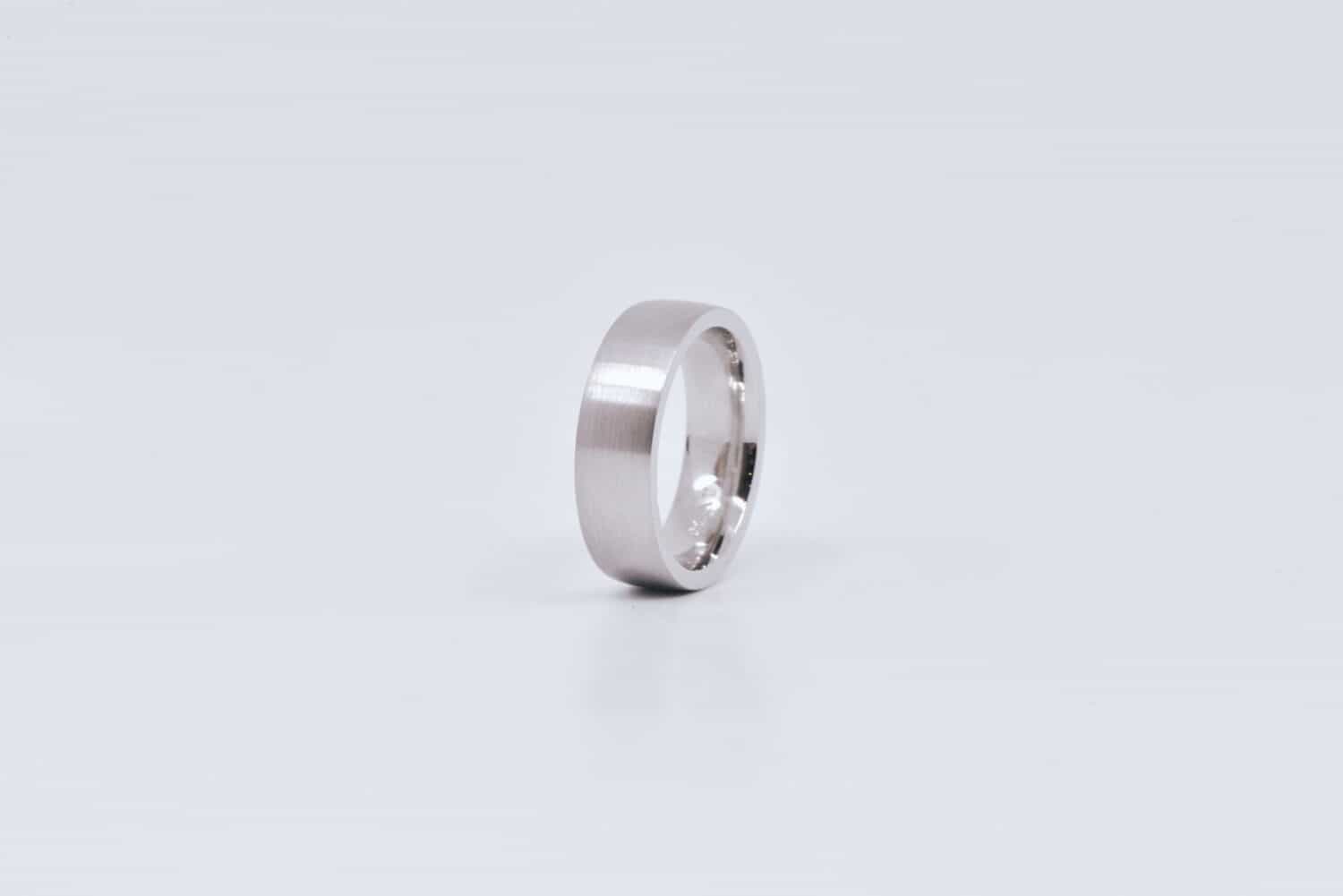
If you’re looking for that shinier look and you opt for a platinum ring, it’s going to require maintenance in the same way white gold does. So, we are intentional about cautioning our clients with platinum because if you choose it, you should get used to that kind of worn look, because if you’re expecting it to be shiny all the time, you’ll need to get it polished every few months which you won’t want to do.

Another question a lot of people will ask, “is platinum stronger or white gold stronger?” That question is a little bit too simplified so in order to answer we need to break it into two components: durability and rigidity.
Platinum is more durable than white gold. This means that if you have two identical rings one platinum and one gold, and someone wears both every single day, if we came back in 20 years and compared them, they both would have gotten a little bit thinner with constant wear and tear. The platinum ring, however, will have retained more of its original thickness compared to the white gold. So, in that sense, it is more durable because it’s a denser metal. However, when it comes to rigidity, it’s a different story. White gold is more rigid than platinum. What that means is platinum is a more malleable bendable metal. We’ve seen some platinum rings with constant wear, where the round shape has kind of distorted over time even though it could be easily remedied. White gold on the other hand is more likely to hold its form and shape better.
In both cases, there’s no clear winner. It’s just different.


The last thing we’ll say about platinum is that because it’s a completely hypoallergenic metal – if you have really sensitive skin, you’re going to want to look for a metal that’s completely hypoallergenic, in which case platinum would be the one for you.
In Summary
To wrap up this post, we want to contextualize what we’re talking about with the style that you’re thinking about: if you are thinking of a style that’s like a solitaire with a lot of that plain metal visible, your metal choice, color, white gold versus platinum and things of that nature are going to have a much bigger impact.

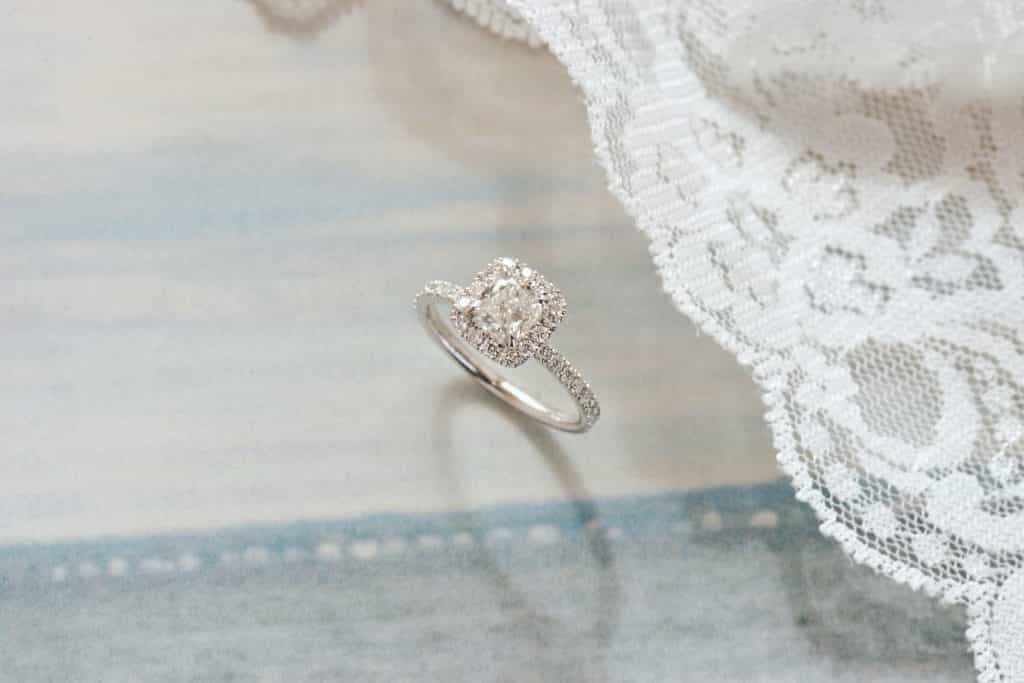
Whereas if you are thinking of a ring that has diamonds everywhere, the color, the metal, white gold versus platinum etc. are going to have a much smaller impact.
If you’ve made it this far you can see that there is SO much to discuss about metals, and I hope that we were able to bring you into the fold and really get you to understand the differences between them.
But really, as we always say, you need to see these things in person, whether it’s in our studio or in our online virtual studios. We’d love to take you through all your metal options so we can figure out what’s right for you.



